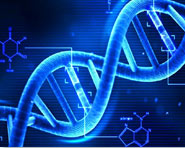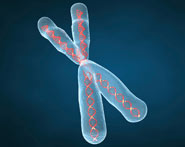


 النبات
النبات
 الحيوان
الحيوان
 الأحياء المجهرية
الأحياء المجهرية
 علم الأمراض
علم الأمراض
 التقانة الإحيائية
التقانة الإحيائية
 التقنية الحيوية المكروبية
التقنية الحيوية المكروبية
 التقنية الحياتية النانوية
التقنية الحياتية النانوية
 علم الأجنة
علم الأجنة
 الأحياء الجزيئي
الأحياء الجزيئي
 علم وظائف الأعضاء
علم وظائف الأعضاء
 الغدد
الغدد
 المضادات الحيوية
المضادات الحيوية|
Read More
Date: 11-6-2021
Date: 28-10-2020
Date: 7-6-2021
|
Before a final mRNA product is made that can be translated, several proofreading regulatory steps must take place. The RNA polymerase may not even clear the promoter and slip off, producing truncated transcripts. Once the nascent transcript reaches approximately 23 nucleotides, the RNA polymerase no longer slips off, and full transcript elongation can occur. RNA polymerase then continues to traverse the template DNA strand, using ATP while complementarily pairing bases and forming the phosphodiester ribose backbone. Many RNA transcripts may be rapidly produced from a single copy of a gene, as multiple RNA polymerases can transcribe a gene simultaneously, spaced out from one another. An important proofreading mechanism during elongation allows the substitution of incorrectly incorporated bases or editing of bases for other purposes, usually by permitting short pauses during which the appropriate RNA editing factors can bind. RNA editing mechanisms in mRNAs include nucleoside modifications of cytidine to uridine (C-U) and adenosine to inosine (A-I) by deamination, as well as nucleotide insertions and additions without a DNA template by protein complexes called editosomes. Adenosine to-inosine (A-to-I) modifications make up nearly 90% of all editing events in RNA. The deamination of adenosine is catalyzed by the double-stranded RNA(dsRNA)-specific adenosine deaminase (ADAR). The deamination of adenosine to inosine disrupts and destabilizes dsRNA base pairing with multiple possible outcomes, such as reduced formation of small interfering RNAs (siRNAs) but also labeling of RNA as self and prevention of activation of an innate immune response. Studies in hematopoiesis and leukemia have elucidated the critical roles of A-to-I editing.[1]
Another important repair mechanism is transcription-coupled nucleotide excision repair, where RNA polymerase stops transcribing when it comes to a bulky lesion in one of the nucleotides in the gene. A large protein complex excises the DNA segment containing the bulky lesion, and a new DNA segment is synthesized to replace it, using the opposite strand as a template. The RNA polymerase then resumes transcribing the gene. However, in general, RNA proofreading mechanisms are not as effective as in DNA replication, and transcription fidelity is generally lower.
References
------------
[1] Heraud-Farlow JE, Chalk AM, Walkley CR. Defining the functions of adenosine-to-inosine RNA editing through hematology. Curr Opin Hematol. 2019;26(4):241–248.



|
|
|
|
حقن الذهب في العين.. تقنية جديدة للحفاظ على البصر ؟!
|
|
|
|
|
|
|
علي بابا تطلق نماذج "Qwen" الجديدة في أحدث اختراق صيني لمجال الذكاء الاصطناعي مفتوح المصدر
|
|
|
|
|
|
|
ضمن برنامج تأهيل المنتسبين الجدد قسم الشؤون الدينية يقدم محاضرات فقهية وعقائدية لنحو 130 منتسبًا
|
|
|